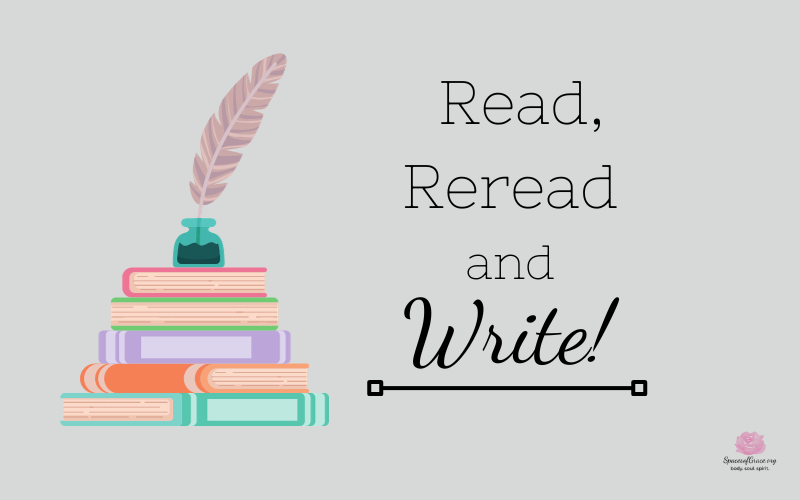Read, Reread, Write!
18 Now it shall come about when he sits on the throne of his kingdom, he shall write for himself a copy of this law on a scroll in the presence of the Levitical priests. 19 It shall be with him and he shall read it all the days of his life, that he may learn to fear the Lord his God, by carefully observing all the words of this law and these statutes, 20 that his heart may not be lifted up above his countrymen and that he may not turn aside from the commandment, to the right or the left, Deuteronomy 17:18
Do you ever wonder why certain Bible studies (like some of ours) have you read and reread the same scripture for several days? Well, it isn’t because the writer is lazy. The answer is in the scripture above.
First, a bit of context: All day during the school year I work with emergent readers to help them gain the skills they need to become confident readers and writers. Because I am a reading interventionist, my eye latched on to a few best practice language routines recorded right there in Deuteronomy: read, reread, write. Three best practices in one Bible verse — only God could be this wise!
Scientific Evidence Backs Up Scripture
John Hattie, a professor and education researcher, created a ranking system for 135 common educational practices that impact learning, (an educational practice or teaching technique that impacts learning is called an effect size). “Hattie found that the average effect size of all the practices he studied was 0.40. Therefore Hattie decided to judge the success of influences relative to this ‘hinge point’,” (Visible Learning, 2023). In other words, any educational practice with an effect size greater than .40 is considered an effective educational practice that impacts student learning.
Repeat
The practice of repeated reads is exactly what it sounds like, reading the same text over and over. This practice has an effect size (ES) of .75. Other sources list repeated reads effect size at .67. If repeated reads deliver strong outcomes for regular texts (stories, articles, informational texts) imagine the impact of rereading the Living Word of God.
Read and Write
According to Hattie, close reading also has an ES of .75. A close read uses repeated reads, plus analyzing and annotating the text, plus discussing and writing summaries about the text. It is a “detailed and careful analysis of a written work” (Miriam Webster Dictionary).
Kind of sounds like Bible study, doesn’t it?
While I could not find an effect size for writing a text, the process of physically writing enables words and sounds to be “orthographically mapped” to the brain.
“Orthographic mapping is the cognitive process by which readers associate speech sounds with written letters (phoneme/grapheme associations) in a written word to store it for immediate retrieval” (Mather & Jaffe, 2021, p. 15)
Read, Reread, Write!
In our recent Bible study calendar, The Parables of Jesus, we employ all three practices: repeated reads, close reads, and writing. We also added a listening component. When we combine best practices, with God’s Word and the Holy Spirit, the effect size becomes incalculable. God’s Word never returns to Him void, and we are forever changed. Amen.
copyright 2023. all rights reserved. Mary Kane




